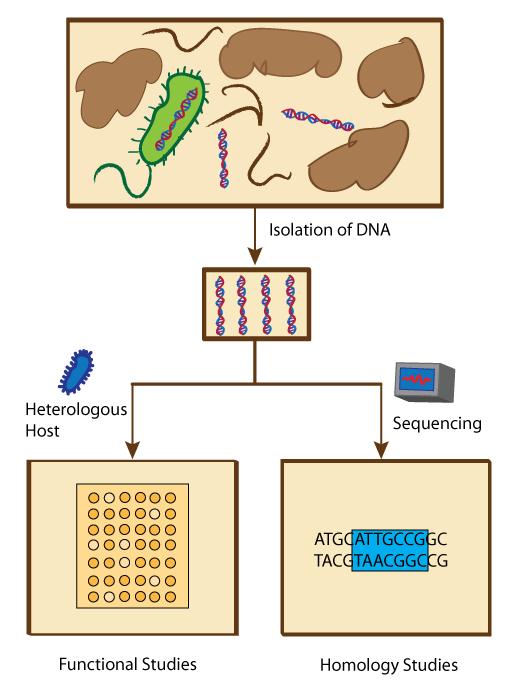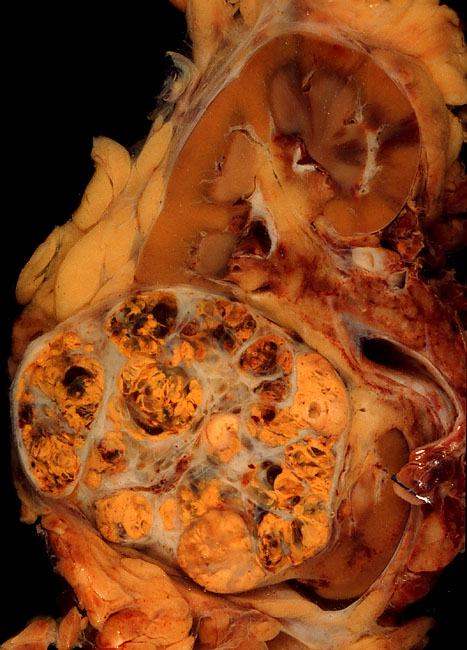|
Michal Hocek
Michal Hocek (born 11 December 1969 in Benešov, Czechoslovakia) is a Czech chemist. He is a group leader at the Institute of Organic Chemistry and Biochemistry of the Czech Academy of Sciences and a professor of organic chemistry at Charles University in Prague. He specializes in the chemistry and chemical biology of nucleosides, nucleotides, and nucleic acids. Career Education and early career Michal Hocek studied at the former Prague Institute of Chemical Technology (now University of Chemistry and Technology, Prague or UCT, Prague) under the supervision of Josef Kuthan. In 1993, he graduated with an MSc degree specializing in organic and medicinal chemistry. He enrolled in a PhD program at the Institute of Organic Chemistry and Biochemistry of the Czech Academy of Sciences (IOCB Prague) under the tutelage of Dr. Antonín Holý, completing his studies in 1996. In 1997, Hocek performed a one-year postdoctoral fellowship under the guidance of Léon Ghosez at the Universit� ... [...More Info...] [...Related Items...] OR: [Wikipedia] [Google] [Baidu] |
MH 2020
MH or mH may refer to: Businesses and organizations * Malaysia Airlines, by IATA airline designator * Menntaskólinn við Hamrahlíð, a gymnasium in Reykjavík, Iceland * Miami Heat, an NBA basketball team Places * Mahalle, (abbreviated mh. on maps) a Turkish residential district * Maharashtra, a state of western India (ISO 3166-2 code MH) * Marshall Islands (ISO 3166-1 alpha-2 country code and postal symbol MH) * County Meath, Ireland (code MH) * Montserrat (FIPS PUB 10-4 territory code MH) People Politics * Mohammad Hatta, 1st Vice President of Indonesia, 3rd Prime Minister of Indonesia, 4th Minister of Defense of Indonesia and 4th Foreign Minister of Indonesia Musicians * Michael Hutchence, frontman and lead singer of Australian rock band INXS Technologists * Michael Hood, internet researcher Science and technology * .mh, the Internet country code top-level domain for Marshall Islands * Malignant hyperthermia, in medicine *Masked hypertension, the phenomenon where a pat ... [...More Info...] [...Related Items...] OR: [Wikipedia] [Google] [Baidu] |
Université Catholique De Louvain
The Université catholique de Louvain (also known as the Catholic University of Louvain, the English translation of its French name, and the University of Louvain, its official English name) is Belgium's largest French-speaking university. It is located in Louvain-la-Neuve, which was expressly built to house the university, and Brussels, Charleroi, Mons, Tournai and Namur. Since September 2018, the university has used the branding UCLouvain, replacing the acronym UCL, following a merger with Saint-Louis University, Brussels. The original University of Louvain (''Universitas Lovaniensis'') was founded at the centre of the historic town of Leuven (or ''Louvain'') in 1425, and abolished by the law in 1797 making it the first university in Belgium and the Low Countries. This university was the centre of Baianism, Jansenism and Febronianism in Europe. A new university, the State University of Louvain, was founded in 1817 and abolished by the law in 1835. A new catholic univ ... [...More Info...] [...Related Items...] OR: [Wikipedia] [Google] [Baidu] |
Transcription (biology)
Transcription is the process of copying a segment of DNA into RNA. The segments of DNA transcribed into RNA molecules that can encode proteins are said to produce messenger RNA (mRNA). Other segments of DNA are copied into RNA molecules called non-coding RNAs (ncRNAs). mRNA comprises only 1–3% of total RNA samples. Less than 2% of the human genome can be transcribed into mRNA ( Human genome#Coding vs. noncoding DNA), while at least 80% of mammalian genomic DNA can be actively transcribed (in one or more types of cells), with the majority of this 80% considered to be ncRNA. Both DNA and RNA are nucleic acids, which use base pairs of nucleotides as a complementary language. During transcription, a DNA sequence is read by an RNA polymerase, which produces a complementary, antiparallel RNA strand called a primary transcript. Transcription proceeds in the following general steps: # RNA polymerase, together with one or more general transcription factors, binds to promoter ... [...More Info...] [...Related Items...] OR: [Wikipedia] [Google] [Baidu] |
Redox
Redox (reduction–oxidation, , ) is a type of chemical reaction in which the oxidation states of substrate (chemistry), substrate change. Oxidation is the loss of Electron, electrons or an increase in the oxidation state, while reduction is the gain of electrons or a decrease in the oxidation state. There are two classes of redox reactions: * ''Electron-transfer'' – Only one (usually) electron flows from the reducing agent to the oxidant. This type of redox reaction is often discussed in terms of redox couples and electrode potentials. * ''Atom transfer'' – An atom transfers from one substrate to another. For example, in the rusting of iron, the oxidation state of iron atoms increases as the iron converts to an oxide, and simultaneously the oxidation state of oxygen decreases as it accepts electrons released by the iron. Although oxidation reactions are commonly associated with the formation of oxides, other chemical species can serve the same function. In hydrogen ... [...More Info...] [...Related Items...] OR: [Wikipedia] [Google] [Baidu] |
Fluorescent
Fluorescence is the emission of light by a substance that has absorbed light or other electromagnetic radiation. It is a form of luminescence. In most cases, the emitted light has a longer wavelength, and therefore a lower photon energy, than the absorbed radiation. A perceptible example of fluorescence occurs when the absorbed radiation is in the ultraviolet region of the electromagnetic spectrum (invisible to the human eye), while the emitted light is in the visible region; this gives the fluorescent substance a distinct color that can only be seen when the substance has been exposed to UV light. Fluorescent materials cease to glow nearly immediately when the radiation source stops, unlike phosphorescent materials, which continue to emit light for some time after. Fluorescence has many practical applications, including mineralogy, gemology, medicine, chemical sensors ( fluorescence spectroscopy), fluorescent labelling, dyes, biological detectors, cosmic-ray detection ... [...More Info...] [...Related Items...] OR: [Wikipedia] [Google] [Baidu] |
Chemical Biology
Chemical biology is a scientific discipline spanning the fields of chemistry and biology. The discipline involves the application of chemical techniques, analysis, and often small molecules produced through synthetic chemistry, to the study and manipulation of biological systems. In contrast to biochemistry, which involves the study of the chemistry of biomolecules and regulation of biochemical pathways within and between cells, chemical biology deals with chemistry ''applied to'' biology (synthesis of biomolecules, the simulation of biological systems, etc.). Introduction Some forms of chemical biology attempt to answer biological questions by studying biological systems at the chemical level. In contrast to research using biochemistry, genetics, or molecular biology, where mutagenesis can provide a new version of the organism, cell, or biomolecule of interest, chemical biology probes systems '' in vitro'' and '' in vivo'' with small molecules that have been designed for a ... [...More Info...] [...Related Items...] OR: [Wikipedia] [Google] [Baidu] |
Antitumor
Cancer can be treated by surgery, chemotherapy, radiation therapy, hormonal therapy, targeted therapy (including immunotherapy such as monoclonal antibody therapy) and synthetic lethality, most commonly as a series of separate treatments (e.g. chemotherapy before surgery). The choice of therapy depends upon the location and grade of the tumor and the stage of the disease, as well as the general state of the patient (performance status). Cancer genome sequencing helps in determining which cancer the patient exactly has for determining the best therapy for the cancer. A number of experimental cancer treatments are also under development. Under current estimates, two in five people will have cancer at some point in their lifetime. Complete removal of the cancer without damage to the rest of the body (that is, achieving cure with near-zero adverse effects) is the ideal, if rarely achieved, goal of treatment and is often the goal in practice. Sometimes this can be accomplished by ... [...More Info...] [...Related Items...] OR: [Wikipedia] [Google] [Baidu] |
Nanomolar
Molar concentration (also called molarity, amount concentration or substance concentration) is a measure of the concentration of a chemical species, in particular of a solute in a solution, in terms of amount of substance per unit volume of solution. In chemistry, the most commonly used unit for molarity is the number of moles per liter, having the unit symbol mol/L or mol/ dm3 in SI unit. A solution with a concentration of 1 mol/L is said to be 1 molar, commonly designated as 1 M. Definition Molar concentration or molarity is most commonly expressed in units of moles of solute per litre of solution. For use in broader applications, it is defined as amount of substance of solute per unit volume of solution, or per unit volume available to the species, represented by lowercase c: :c = \frac = \frac = \frac. Here, n is the amount of the solute in moles, N is the number of constituent particles present in volume V (in litres) of the solution, and N_\text is the Avo ... [...More Info...] [...Related Items...] OR: [Wikipedia] [Google] [Baidu] |
Cross-coupling
In organic chemistry, a cross-coupling reaction is a reaction where two fragments are joined together with the aid of a metal catalyst. In one important reaction type, a main group organometallic compound of the type R-M (R = organic fragment, M = main group center) reacts with an organic halide of the type R'-X with formation of a new carbon–carbon bond in the product R-R'. Cross-coupling reaction are a subset of coupling reactions. It is often used in arylations. Richard F. Heck, Ei-ichi Negishi, and Akira Suzuki were awarded the 2010 Nobel Prize in Chemistry for developing palladium-catalyzed coupling reactions. Mechanism The mechanism generally involves reductive elimination of the organic substituents R and R' on a metal complex of the type LnMR(R') (where L is some arbitrary spectator ligand). The crucial intermediate LnMR(R') is formed in a two step process from a low valence precursor Ln. The oxidative addition of an organic halide (RX) to LnM gives LnMR( ... [...More Info...] [...Related Items...] OR: [Wikipedia] [Google] [Baidu] |
Medicinal Chemistry
Medicinal or pharmaceutical chemistry is a scientific discipline at the intersection of chemistry and pharmacy involved with designing and developing pharmaceutical drugs. Medicinal chemistry involves the identification, synthesis and development of new chemical entities suitable for therapeutic use. It also includes the study of existing drugs, their biological properties, and their quantitative structure-activity relationships (QSAR). Medicinal chemistry is a highly interdisciplinary science combining organic chemistry with biochemistry, computational chemistry, pharmacology, molecular biology, statistics, and physical chemistry. Compounds used as medicines are most often organic compounds, which are often divided into the broad classes of small organic molecules (e.g., atorvastatin, fluticasone, clopidogrel) and " biologics" ( infliximab, erythropoietin, insulin glargine), the latter of which are most often medicinal preparations of proteins (natural and recombinant ... [...More Info...] [...Related Items...] OR: [Wikipedia] [Google] [Baidu] |
H-index
The ''h''-index is an author-level metric that measures both the productivity and citation impact of the publications, initially used for an individual scientist or scholar. The ''h''-index correlates with obvious success indicators such as winning the Nobel Prize, being accepted for research fellowships and holding positions at top universities. The index is based on the set of the scientist's most cited papers and the number of citations that they have received in other publications. The index has more recently been applied to the productivity and impact of a scholarly journal as well as a group of scientists, such as a department or university or country. The index was suggested in 2005 by Jorge E. Hirsch, a physicist at UC San Diego, as a tool for determining theoretical physicists' relative quality and is sometimes called the Hirsch index or Hirsch number. Definition and purpose The ''h''-index is defined as the maximum value of ''h'' such that the given author/jo ... [...More Info...] [...Related Items...] OR: [Wikipedia] [Google] [Baidu] |







